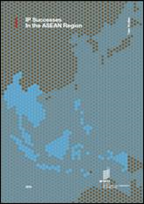New Publication on the Successful Use of IP in the ASEAN Region
August 8, 2014
The World Intellectual Property Organization (WIPO), in cooperation with the Japan Patent Office (JPO) and the ASEAN Secretariat, is pleased to announce a new publication on the successful use of IP in ASEAN countries.

The research project that enabled this publication was proposed by the JPO and generously funded by the Japan Funds-In-Trust. Implemented by the WIPO Japan Office, the publication – IP Successes in the ASEAN Region – consists of a collection of ten case studies, one for each ASEAN country, that highlight how IP has been practically and successfully implemented.
With the markets of these countries expanding and income levels rising, the role of intellectual property (IP) is becoming increasingly important. For policy makers, entrepreneurs, and stakeholders in small, medium-sized, and large enterprises, successful management of the increasing importance of IP has become a pressing issue. This new publication provides real world examples of how IP has been used and managed to enhance competitiveness and foster economic development.
Developed and developing economies face different challenges with regards to IP, and the ASEAN region is unique in that it includes low, middle, and high-income countries that have both advanced and emerging IP systems. This provides an opportunity to explore the impact of IP on each type of country, how companies and other entities in each have responded, and the different type of IP strategies that are used.
The rich diversity of ASEAN member states also provides a chance to study many different industries and look beyond the oft-mentioned IP instruments of patents and trademarks. This new publication explores these, but also investigates a variety of IP instruments that are increasingly important in emerging economies, such as industrial designs, utility models, copyright, domain names, and goods with specific geographical origin. In addition, case studies cover a wide range of industries, from food and beverages to animation and traditional medicine.
Due in part to the wide scope of IP instruments, industries, and economy types, this publications takes into account the unique nature of each ASEAN member country and serves to show how IP can continue to be used for economic, social, and cultural development in the region.